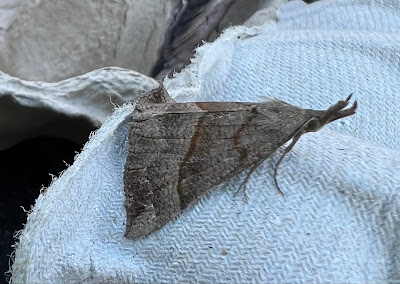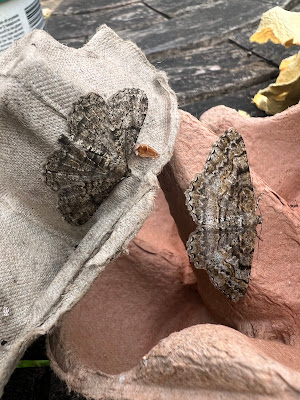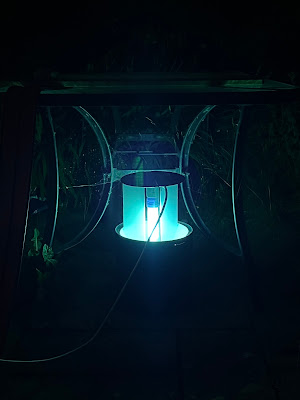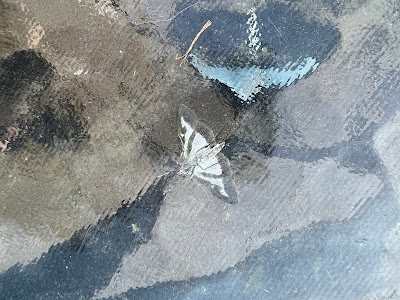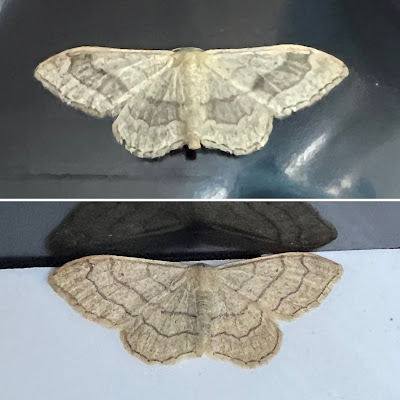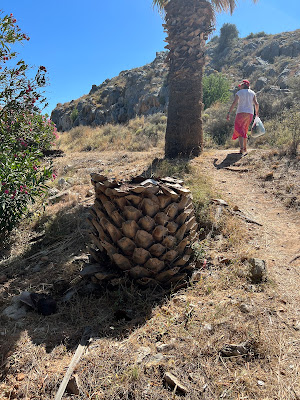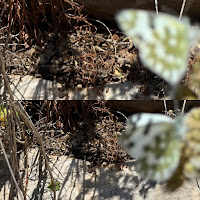After all the hectic excitement of my granddaughter's trap and its many hawk moths, I'm back to the quieter but still interesting pastures of home. I've been out on the actual pastures recently, checking whether Black Hairstreak butterflies are still around at the site I discovered last year, only a quarter of a mile from the computer on which I'm writing this.
They are. On my third visit, one obligingly swooped down from the high oak branches where they feed on the honey of aphids and sunned itself on some bramble flowers. It took off again and skedaddled before I could get a picture but it is reassuring that this elusive butterfly is remaining loyal to my doorstep.
My first picture above shows some of the 29 other butterfly species that we get here, Common Blue, Marbled White, Small Heath, Brimstone and Meadow Brown. In the course of a nine mile walk, I also saw plenty of Ringlets and Speckled Woods plus a couple of Commas and the day-flying moths, the Cinnabar and the Six-spot Burnet - the latter shown in the composite picture, top left.
Another moth which I disturbed on a narrow footpath between hedges during bright sunlight was a Blue-bordered Carpet, a species which has visited my trap only once, like the Anania perlucidalis below which I took at first for the very common Mother of Pearl micro-moth because of its almost identical, opalescent wings. I nearly ignored it on those grounds but luckily checked because of its two larger black markings and notably smaller size overall. For those who find Linnaean names off-putting, it is also known as the Fenland Pearl or, increasingly, the Marsh Pearl.
Next we have two smart Common Wainscots showing the species' colour variation and then a selection topped by two of the three main variants of the Large Yellow Underwing, a Buff Tip (the well-known twig or cigar butt imitator), a Small Magpie micro, a smart Silver Y and a Willow Beauty.
Green is a comparatively rare colour in moths and so it was a pleasure to have the coincidence of a Green Oak Tortrix and a Light Emerald. After them, observe a couple of Mottled Rustics followed by a Snout, the Pinocchio moth with its outsize palps or feeling organs, and a Shears, clearly showing the tiny double-bladed reason for its name.
Next we have that singular moth the Yellow Straw which always rests in this angular way with its forewings held out but completely covering its hindwings. And finally, a very fine and I think almost certainly freshly-emerged Mottled Beauty, seen in the second and concluding picture with a Willow Beauty, smaller and without the rich streaks of brown.








